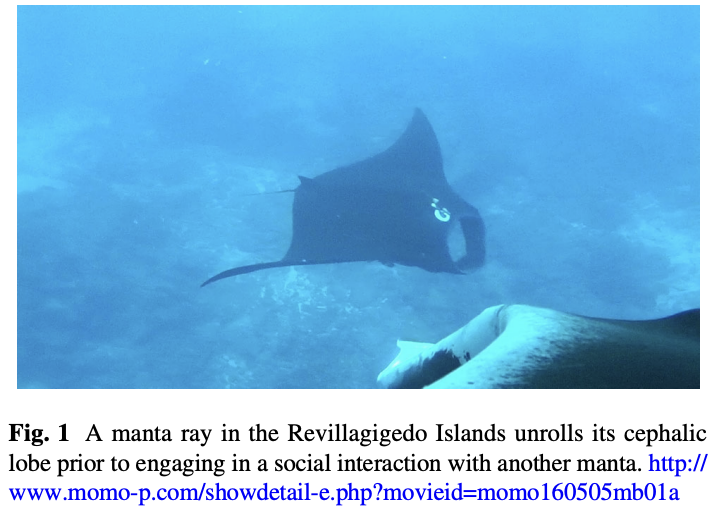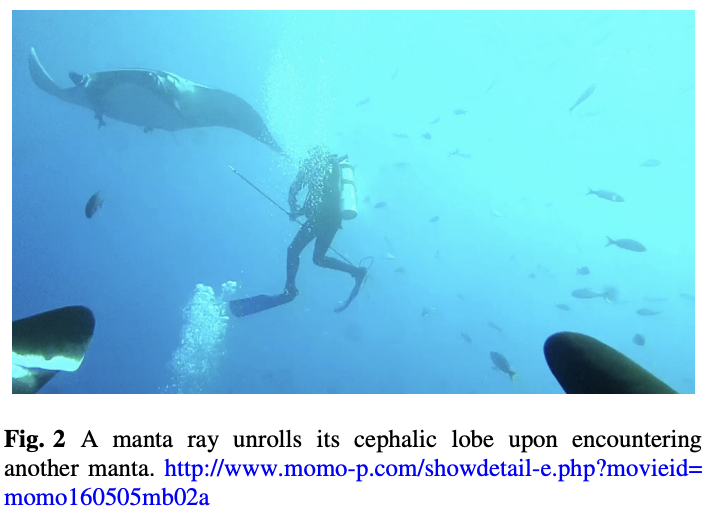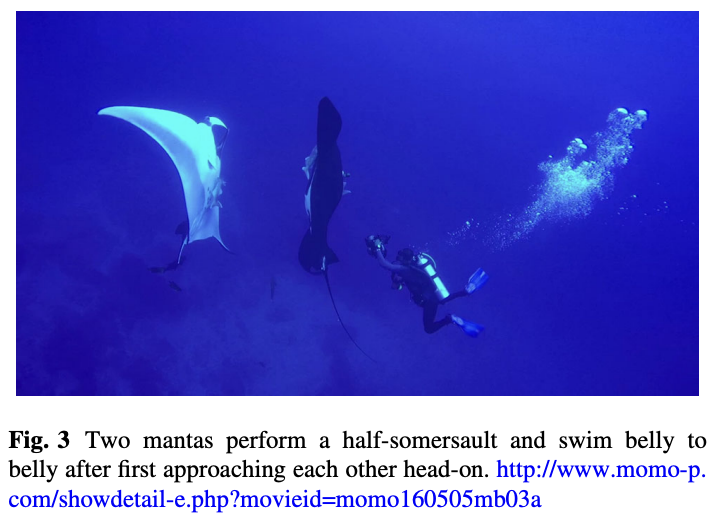Are mantas self aware or simply social? A response to Ari and D’Agostino 2016
October 2016
Joshua D. Stewart, Guy M. W. Stevens, Greg J. Marshall & Kyler Abernathy
Keywords: Buccal Cavity • Repetitive Movement • Cleaning Station • Manta Ray • Self Awareness • Social Behaviour



The study by Ari and D'Agostino (2016) aims to determine if manta rays can identify themselves in a mirror, potentially indicating self-awareness in a fish species. The study involved captive manta rays exposed to a mirror, a whiteboard (control), and a blank condition. The authors observed increased activity and specific behaviours near the mirror, which they interpreted as signs of self-awareness. However, the summary points out that these behaviours are common during social interactions among wild manta rays, suggesting an alternative explanation. The study's conclusions are challenged, as they may not differentiate between self-directed behaviours and social interactions. The paper highlights the importance of observing both captive and wild animals in behavioural studies and emphasises the need for more conclusive evidence before attributing self-awareness to manta rays.
Author Affiliations
Scripps Institution of Oceanography
The Manta Trust
Environment Department, University of York
National Geographic Society
